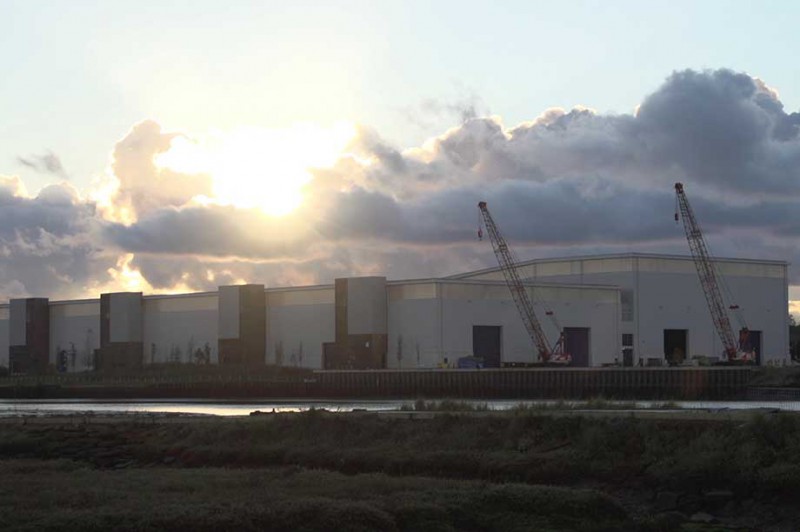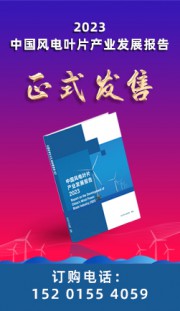Inside the assembly hall were four ready nacelles with their full covers mounted, and several electrical modules to be fitted in-house inside the bottom tower sections. Each module incorprates an internal power supply unit at the upper floor. This is going downward followed by an in-house manufacturerd DC/AC inverter (the AC/DC rectifier is in the nacelle rear), 66kV or 33kV transformer, and switch gear at bottom level.
Blade manufacture
MHI Vestas' Nakskov blade-manufacturing plant in Denmark started operations in 2014 in a refurbished former Vestas V90 blade facility. Blades are also manufacturered at the company's Isle of Wight facility in the UK, except the final painting and leading edge protection application stages, which are conducted in Nakskov.

Blades are made at MHI Vestas' Isle of Wight plant in the UK and in Denmark
The straight 80-metre blades are of the structural-shell type, whereby carbon-fibre sections are incorporated in the upper and lower shells. A noticeable feature of the 35-tonne unit is the large-diameter root section extending into a slender aerofoil towards the blade tip. The blade root incorporates a novel patented bolts-inserts design enabling reducing wall thickness, close bolt interspacing with more bolts at the circumference for absorbing blade loads. The combination of large blade root diameter and other distinct features indicates ample potential for future blade enlargement, building on the current design, or a complete new development.
Senvion has announced it is working on a 10MW-plus turbine. But the V164-9.5MW’s specific power rating of 450Wm2 probably represents a final installed power "stretching" with the current 80-metre blades. The next logical step for MHI Vestas to propel the unit over 10MW will require a larger rotor.
Andersen would not be drawn on specific plans. "The platform has already proven to be well scalable and we will do whatever necessary in future to stay competitive and fully match any competitor challenge."
 手机浏览网
手机浏览网








